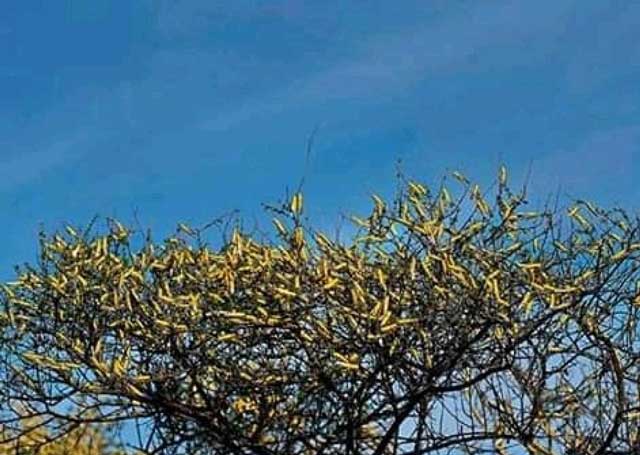
Moroto, Uganda | THE INDEPENDENT | Swarms of desert locusts have been sighted in Abim and Katakwi districts on Monday evening.
Abim district, located in Karamoja sub region borders Kapelebyong/ Amuria districts in Teso Sub Region and Otuke/Agago districts in Lango Sub Region.
In Abim, the locusts landed on Alerek rock in Alerek Sub County but were seen flying through Abim Sub County to Magamaga Sub County around 5:00pm. In Katakwi district, our reporter saw a swarm of locusts crossing Soroti- Moroto Highway, about five kilometers from Katakwi town at 7:03pm.
Nelson Olwit, the Principle Assistant Secretary in Abim says the district is doing surveillance on the movement of the locusts. He notes that no team of experts to spray the locusts has arrived to the district yet.
The desert locusts invaded the Karamoja sub region on Sunday evening through Amudat district. The first swarm came from West Pokot through Kosike in Karita Sub County and flew towards Nakapiripirit and Nabilatuk areas. Another swarm came from Turkana County, Loima District in Kenya to Nakabaat in Rupa Sub County.
Dr. Francis Inangolet, the District Production and Marketing Officer of Moroto says the insects were still seen in Rupa sub county as other sub counties had not yet reported the invasion.
He notes that the insects for now only feed on shrubs since most of the plants were harvested last year.
On Monday, government airlifted pesticides for spraying desert locusts in Karamoja. Uganda last had desert locusts in the late 1960s and the current invasion is linked to climate change. According to IGAD, one swarm of locusts measures 60 kilometers long by 40 kilometers wide.
A typical desert locust swarm can contain up to 150 million locusts per square kilometre. UN reports indicate that locusts can reproduce rapidly and, if left unchecked, current numbers could grow 500 times by June.
A swarm can destroy as much food crops in a day as is sufficient to feed 2,500 people.
*******
URN
 The Independent Uganda: You get the Truth we Pay the Price
The Independent Uganda: You get the Truth we Pay the Price



